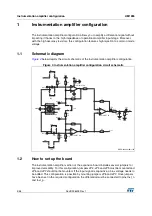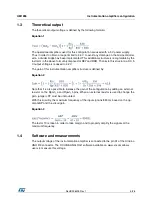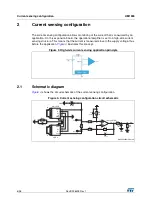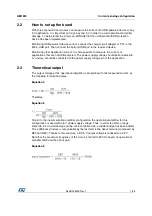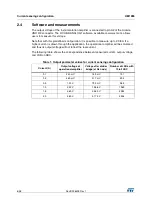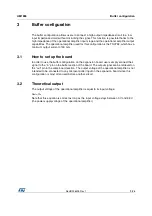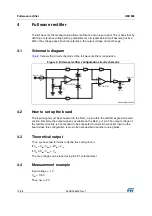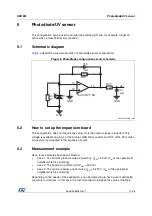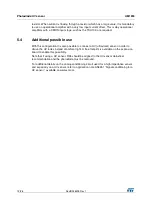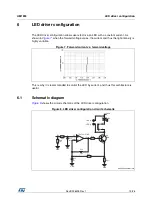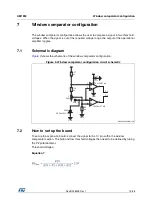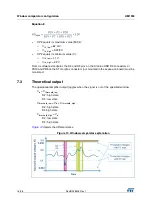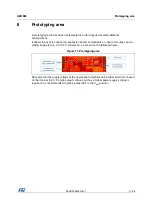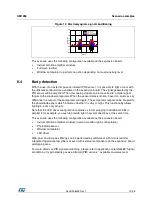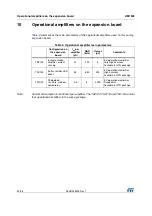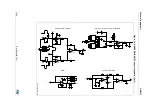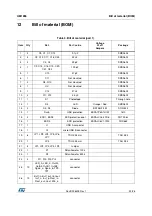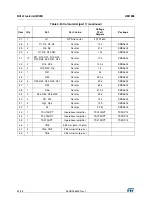
Scenario examples
UM1955
18/28
DocID028405 Rev 1
9 Scenario
examples
9.1
Current sensing: motor outside of standard operation
To avoid damage to an application, it can be useful to know how much current is going
through the motor. With the high-side current sensing or instrumentation amplifier
configuration, the current can be monitored. The motor can be in different configurations:
stopped, in standard operating condition or in overload. By sensing the current, it is easy to
detect the configuration of the motor. Thus we can set some flag to alert the user or the
microcontroller. If the current is too low or too high, the output of the window comparator will
toggle. Then, for example, when the motor is in a standard operating range, the LED can
illuminate with a low intensity, but if the current is out of range, the LED can blink with a high
intensity. The threshold current can be adjusted thanks to potentiometer P2 with the window
comparator configuration. Of course, an LED is used here as an example in order to obtain
a visual response, but it can also be useful to capture the interruption at the output of the
window comparator. By doing this, it would be possible to stop the motor or to perform
another action in order to prevent damage to the application.
This scenario uses the following configuration available on the expansion board:
•
Current sensing or instrumentation amplifier structure
•
Window comparator
•
LED driver
Note that with the instrumentation amplifier configuration, an external shunt resistor is
required. But it will allow you to sense the current in both clockwise and counter-clockwise
directions.
9.2 Strain
gauge
Having some strain gauge composing a Wheatstone bridge, the instrumentation amplifier
can help you to detect deformation. These deformations can be, for example, for structure
monitoring, for torque monitoring or even to develop your own scale for weight
measurement.
9.3 Electromyogram
An electromyogram (EMG) application can help users monitor muscle electrical activity. It
can be used to trigger an action by contracting your arm, for example.
The signal generated by the muscle is a very small AC signal. This is why it is mandatory to
amplify it. Then its envelop must be detected. Envelop detection should be performed with
an accurate rectifier in order to avoid losing diode voltage. Thus is why an active
configuration with operational amplifiers is used. Once the signal is rectified, we just need to
filter the signal. It can be done on the microcontroller side, by software or with its integrated
operational amplifier.
Figure 12
shows the signal conditioning for an EMG application.

